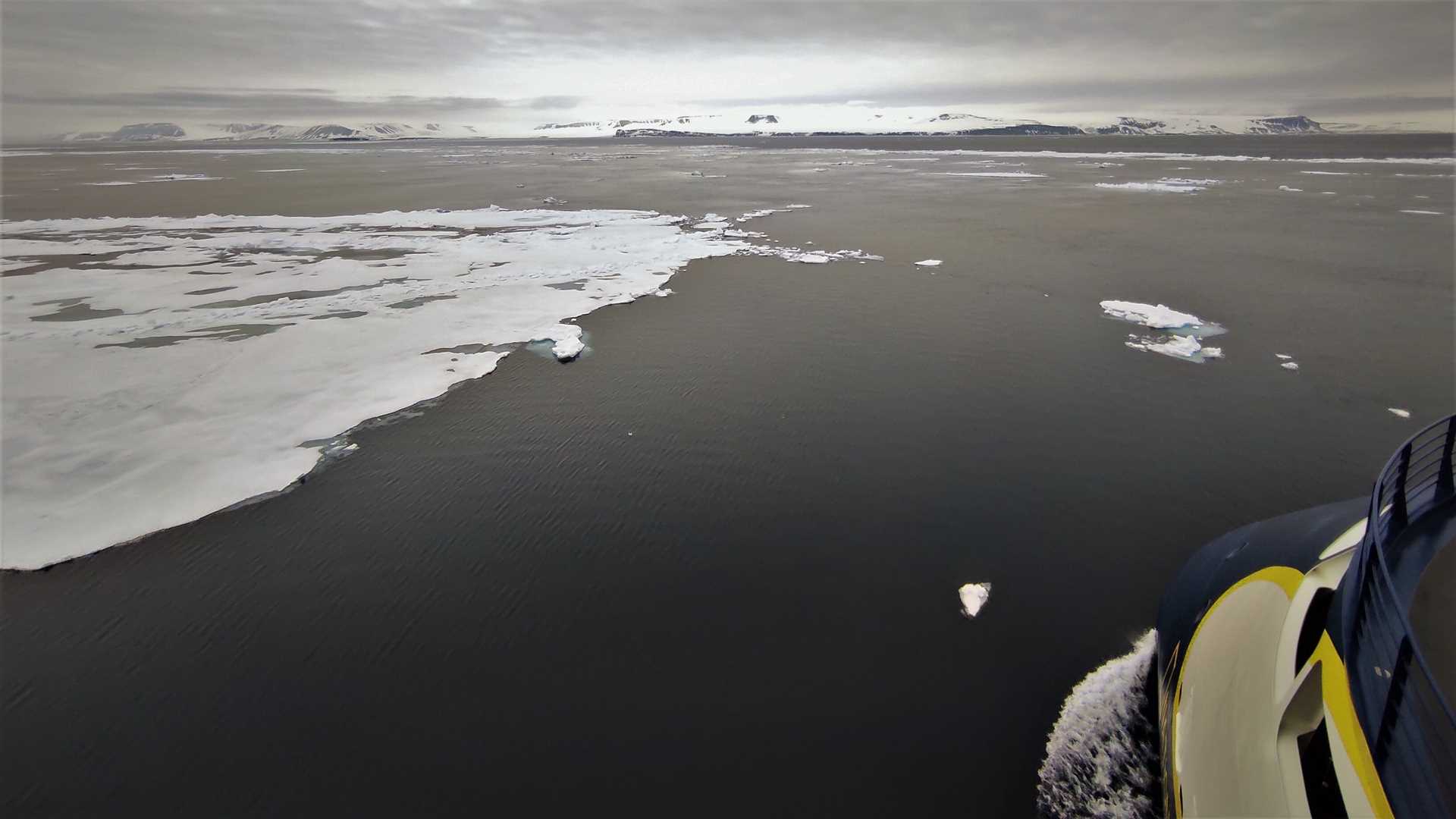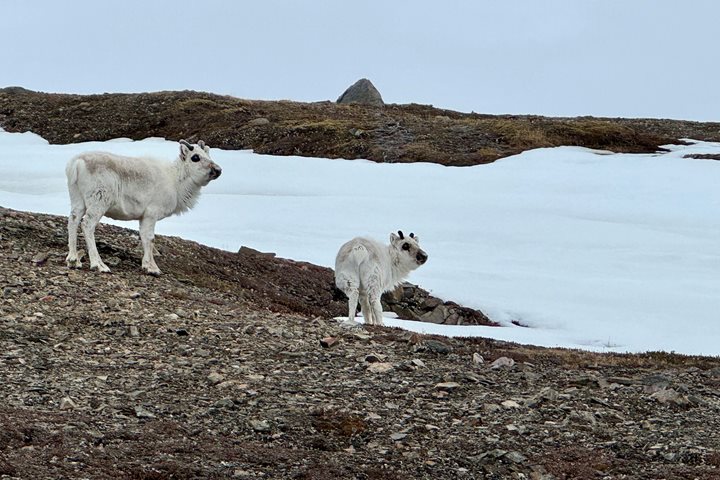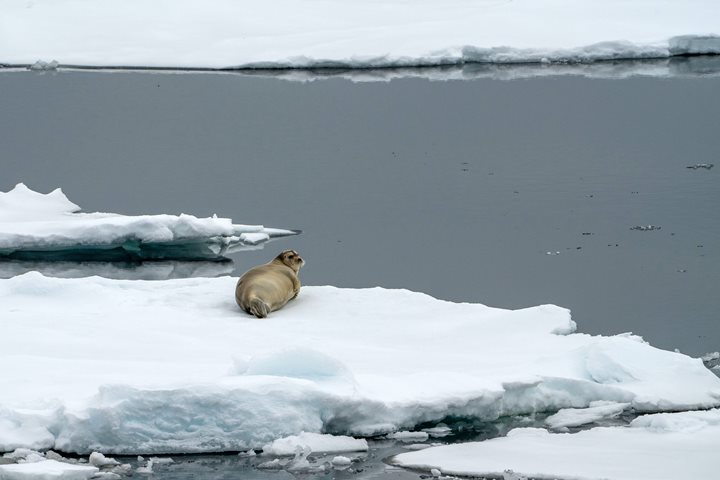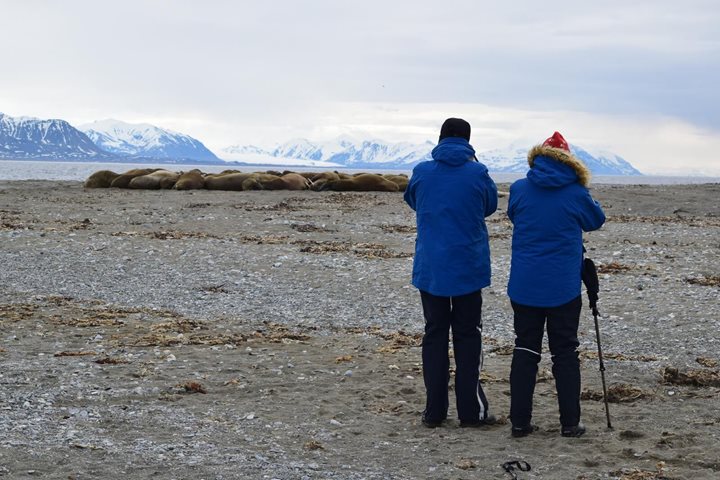We awoke with a polar bear hangover. And the ice that had been our friend yesterday, turned unfriendly this morning. The best-laid plans of our Expedition Leader Stefano turned into a big frozen mess, as our morning kayak and landing were aborted when ice clogged the bay and landing site. Instead, we made our way back out of the fjords, heading for fast ice and the chance for even more wildlife encounters.
After the adrenalin of so many polar bear encounters, many of us were content to spend the morning listening to certified photo instructor Carlos Navarro offer tips on better expedition photography, while editing photos of polar bears and walrus. After lunch, naturalist Serguei Ponomarenko took us through the various beautiful shapes and forms of sea ice.
Then we arrived at Alkefjellet, an overwhelming wall of bird activity. Guillemots lined the striking cliff face, filled the skies, and covered the waters, as we spent the afternoon Zodiac cruising this iconic site. These harsh cliffs, which plunge straight down into the ocean, don’t seem like the ideal place to nest. However, thousands of guillemots lined precarious ledges along the cliff face. We happily spent the afternoon surrounded on all sides as guillemots flew over our Zodiacs, floated by, and dove beneath us. Our undersea team followed some of the guillemots under the water, exploring the cliff face as it stretched beneath the surface of the ocean. The nutrients that trickle down from the thousands of birds nesting along the cliff edge support an incredibly rich and vibrant underwater ecosystem. The walls are covered with anemones and soft corals, and the water is rich in phytoplankton and zooplankton. The kelp provides a habitat for fish, crabs, and various other marine critters, providing an important food source for the guillemots.
In the evening, we crossed 80 N. For those of us still awake, the hotel team organized a champagne toast in the den to celebrate a remarkable trip exploring Svalbard.







